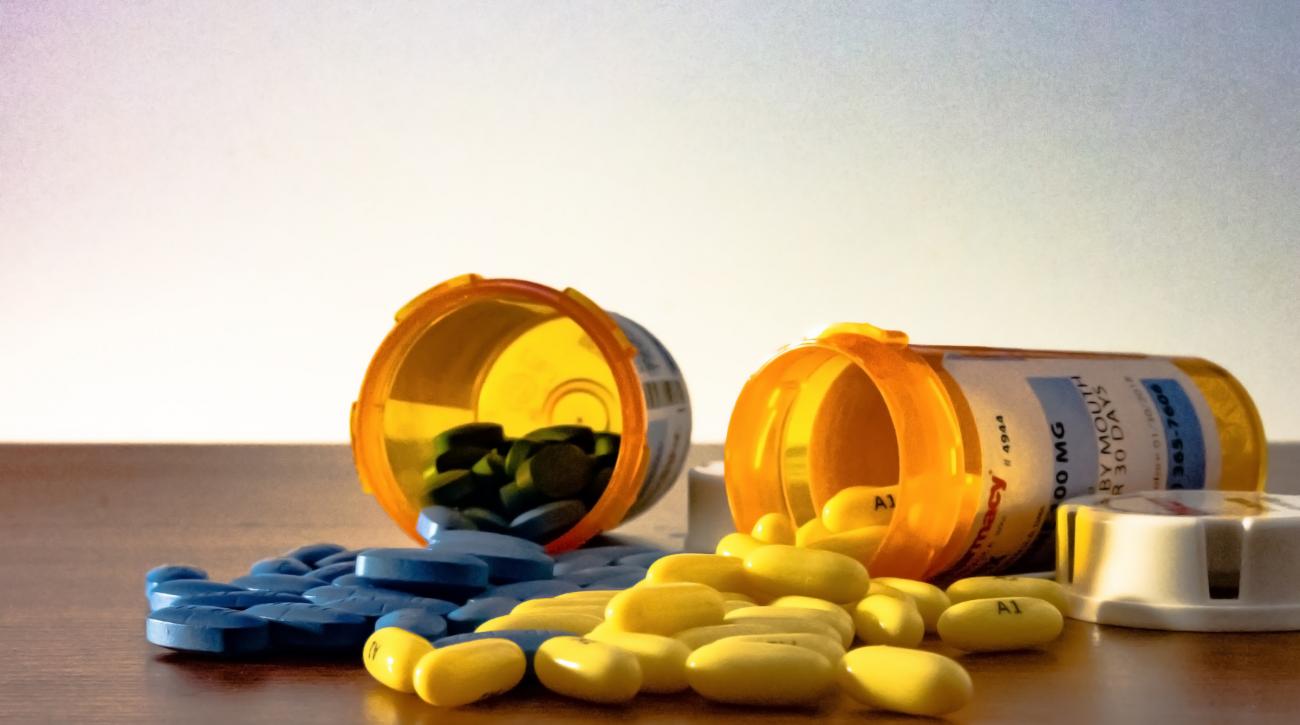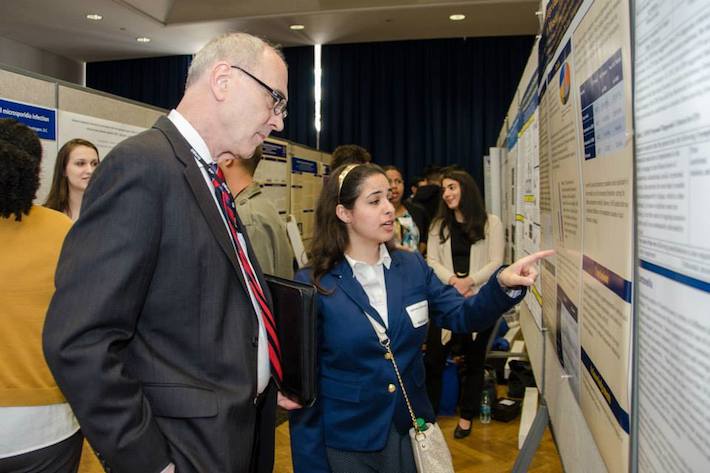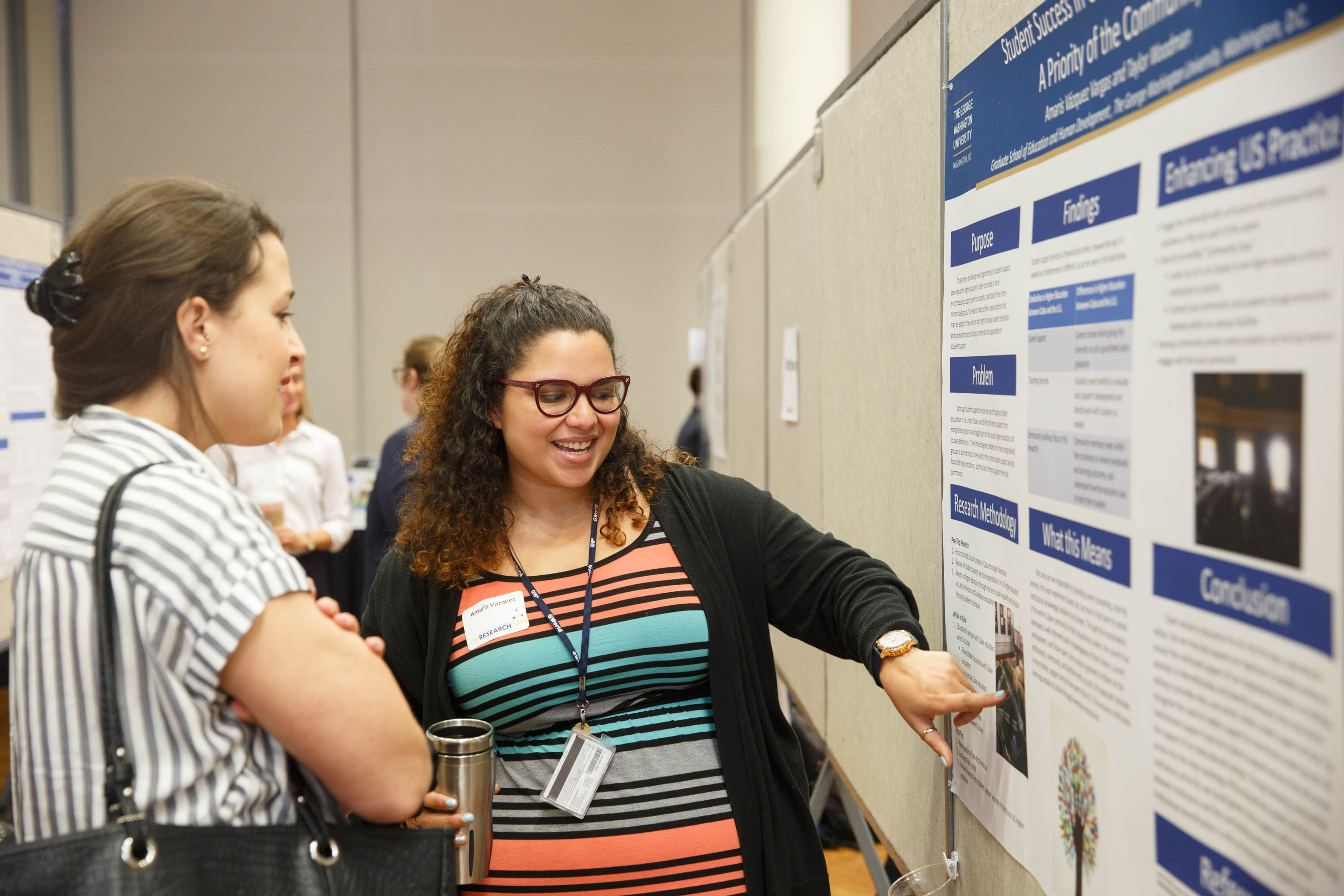By Kristen Mitchell
A team of George Washington University students is working to combat the opioid crisis in Virginia by analyzing data related to the issue in order to identify patterns or trends that could help lawmakers develop policies to curb addiction and overdoses.
GW graduate students are participating in the project as part of the Governor’s Data Internship Program. The program brings together college students throughout the commonwealth to examine public health and economic issues using data collected by government agencies.
GW students advised by Larry Medsker, director of the GW Data Science Program, will work with a student team from George Mason University to explore top causes for painkiller abuse, factors of addiction and the impact of the opioid crisis on individuals, families, state and local governments and businesses.
Vicky Hao, a first-year data science graduate student and GW student team leader on the project, said the early stages of the project centers on better understanding the crisis.
“Before this project I wasn’t aware that the opioid crisis was as serious in this region,” she said. “A lot of people don’t know how addictive this medication is, and they got addicted, so they fall into this crisis. This could help people increase their knowledge of drugs and help them not abuse opioids.”
Opioids are a class of drugs that include illegal substances such as heroin and pain relievers available by prescription like oxycodone and the more potent fentanyl. Over the past 20 years, the number of prescribed opioid pain relievers has increased rapidly, which led to widespread use and misuse of the highly addictive substance, according to the National Institute of Drug Abuse.
An estimated 21 to 29 percent of patients prescribed opioids for chronic pain misuse the drug, and every day more than 90 Americans die from opioid overdose, according to the National Institute of Drug Abuse.
Virginia has been hit hard by opioid addiction. Opioid-related visits to emergency rooms increased by more than 200 percent between 2005 and 2011, according to a Virginia Surgeon General report released last year. Virginia Health Commissioner Marissa Levine declared the commonwealth’s opioid addiction crisis a public health emergency in November 2016.
Starting this month, GW students will work with Virginia to identify the most vulnerable populations and areas of highest need for healthcare services to combat the public health emergency caused by opioid addiction. Dr. Medsker said the team is seeking answers for two main questions: Why is the opioid crisis happening, and which areas see the most impact.
“We would want to look at economic data, differences in age, gender and other factors to try to see correlations and patterns,” he said. “We just try to tease all that out and see where the problems are, why they are happening, with the hope of gaining insights from data to suggest solutions.”
Students will use data from the Virginia Department of Health and federal agencies including the Census Bureau, the Department of Health and Human Services and the Centers for Disease Control and Prevention in their examination of the commonwealth’s opioid crisis. Dr. Medsker expects the work will continue through the 2017-18 academic year.
This summer, the team plans to identify and rank areas of Virginia by average rates of addiction for different types of drugs and identify demographics for different rates of addiction including correlations with age, gender, economic level, nationality, religion, employment and health. They will create charts showing access to addiction prevention and treatment facilities and maps that show the relationship of residential and business centers to areas of high addiction levels.
The team will identify areas where more data is needed and will bring a disciplined approach to the project, Dr. Medsker said. The students are trained to sift through large amounts of data from different sources to find what is significant and determine the best method to analyze the and visually present the data.
“One of the things we do in data science is explore existing data and identify areas where more data is needed,” he said. “Most likely we would then recommend to the agencies what might be collected or found in other agencies to get a better picture of the problem and possible solutions.”
The Governor’s Data Internship Program brings students with different skillsets together to accomplish a goal, Dr. Medsker said. Some students have more experience with programming while others might be better at visualization of data or choosing and interpreting analytical techniques.
“Not everybody on a team has the same depth of expertise,” he said. “They each contribute their individual skills and need to communicate with each other.”
GW graduate students Fei Wang, Zhongxin Li, Yangfei Gao, Yuting Feng, Jiachen Wang, Jessica Ohnona and Danielle Cuddington will also participate in the project this summer. New members studying computer science, statistics, public health, and data science could be added to the team as the project evolves.
The Data Science Program was launched two years ago within the Columbian College of Arts and Sciences. The program is designed to teach students deep skills in data analytics and how to apply them to the natural and social sciences, Dr. Medsker said.
GW students have previously worked with the commonwealth through the Governor’s Data Intern Program on Virginia-related projects. They previously looked at data tracking student success after receiving a GED and a project with the Virginia Department of Health to map driving times to the closest health facilities across Virginia.




